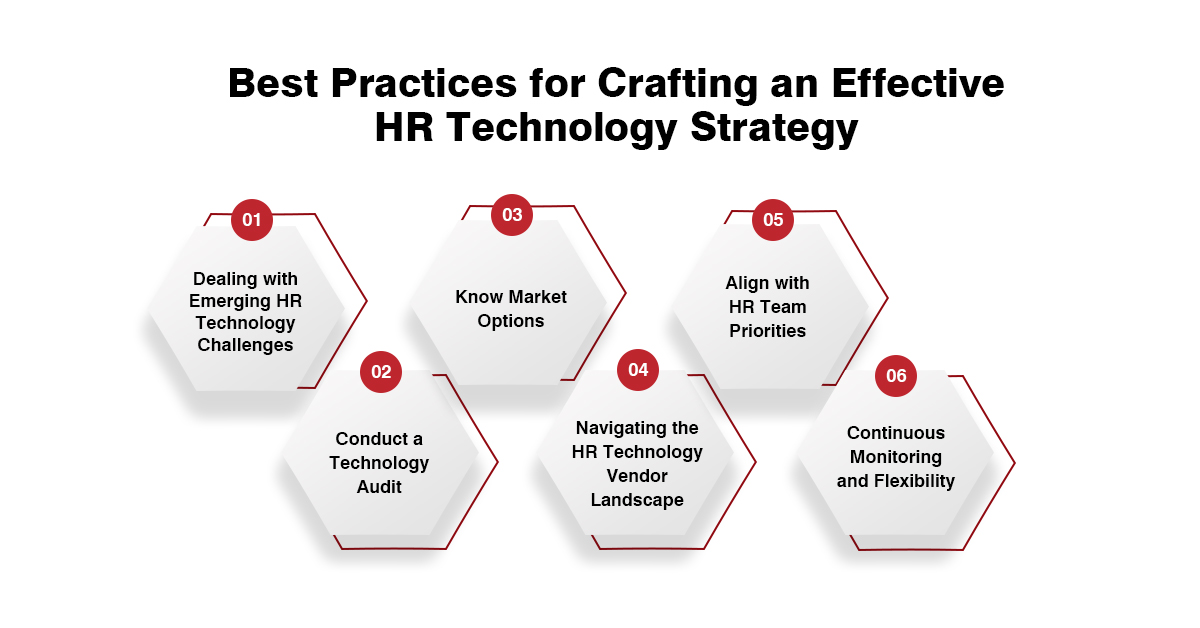The HR technology landscape has undergone a remarkable expansion in the last decade, presenting an array of solutions— HR Technology— that can address nearly every task imaginable. Navigating this abundance raises the question: How do you determine which HR strategy is worth investing in and how do you go about seamlessly incorporating them into your team's operations?
Let's be honest, integrating new technology is no small feat. It takes time, money, and a bit of disruption to your daily life. This is where HR leaders need to explore and understand HR technology strategy before adopting. Read along to know what an HR technology strategy is, why it's your trusty companion in HR tech decisions, and, most importantly, how to seamlessly bring it to life in your organization.
An HR technology strategy is a well-defined plan that aligns an organization's HR objectives with the optimal use of technology solutions. This strategy is an all-encompassing blueprint outlining the acquisition, implementation, and utilization of technology, including AI, within your HR organization.
This strategic plan enables the thoughtful purchase and utilization of these tools, ensuring seamless integration and maximum return on investment, in contrast to a scenario where disparate and underutilized tech platforms accumulate.
A successful HR strategy is intricately linked to business priorities--- business goals influence the allocation of limited resources, directing investments toward technologies that support HR functions throughout the organization.
By seamlessly integrating HR technology strategy, you can unlock a myriad of benefits that transcend traditional HR practices.
With the adoption of HR technology, HR leaders and organizations can—
Enhance Compliance: HR technology strategies ensure adherence to ever-evolving regulations and compliance standards, reducing the risk of legal issues and penalties.
Streamline Recruitment: With automated applicant tracking systems, the recruitment process has been compressed, saving time and resources while ensuring a more efficient and organized hiring workflow.
Boosts efficiency: These strategies boosts efficiency by automating tasks, allowing focus on strategic initiatives for innovation and growth.
Global Accessibility: HR technology facilitates remote access to HR information, fostering a globally connected workforce and supporting organizations with diverse geographical locations.
Performance Analytics: Robust HR analytics tools provide insights into employee performance, enabling targeted interventions for skill development and overall performance improvement.
Improved employee experience: Through HR technology strategies, organizations can include self-service options, personalized learning, and streamlined communication, that can lead to higher satisfaction and retention.
Crafting a successful HR technology strategy requires HR leaders to navigate the complexities of the digital landscape with confidence. Here are essential best practices to guide the development of a robust HR tech strategy:
After you are done formulating your HR technology strategy, it is crucial to ensure its effective implementation. Achieving success in your strategy involves the following tips:
Engage IT Partners: Involve your IT team in the implementation process from the outset, as they are likely to play a pivotal role. Collaborate with them to ensure preparedness and a timely execution of the plan.
Communication Changes to Employees: Recognize that change can be challenging for everyone. When transitioning to new technology platforms, communicate proactively with employees. Provide insights into the reasons behind the changes, the timeline for implementation, and the anticipated benefits to ease the transition.
Offer Ongoing Training: Facilitate a smooth adoption of the invested technology by providing continuous and convenient training sessions for employees. A high user adoption rate, leading to a more significant return on investment, is attainable through ongoing training and robust support mechanisms.
Monitor and Evaluate: Regularly monitor the performance of HR technologies and gather feedback from users. Continuous evaluation allows for adjustments and enhancements to better meet evolving organizational needs.
Even though new technologies hold the potential to revolutionize HR practices, their effectiveness hinges on workforce adoption. Results are bound to fall short if employees do not embrace and integrate these new ways of working. The bottom line is, for these HR strategies to become a powerful tool for organizations, you need careful planning, implementation, and continuous evaluation of the latest HR technology.
This website uses cookies to enhance website functionalities and improve your online experience. By browsing this website, you agree to the use of cookies as outlined in our privacy policy .